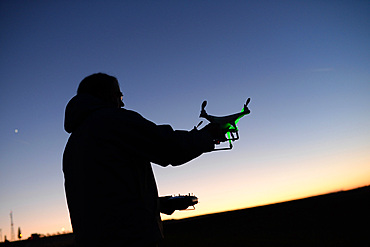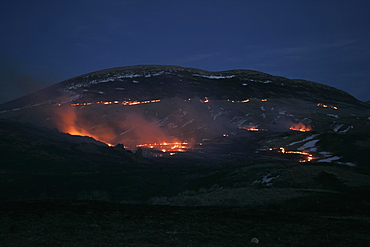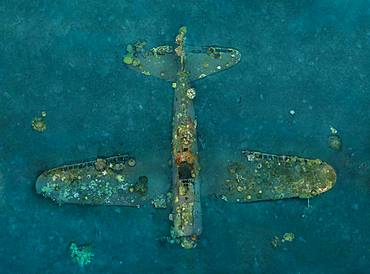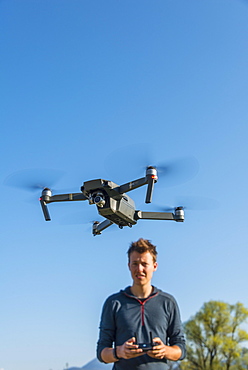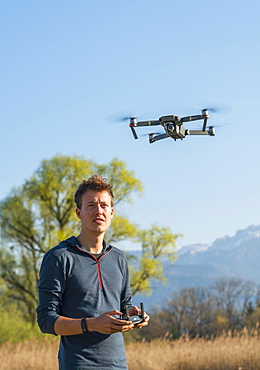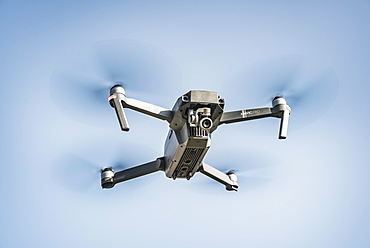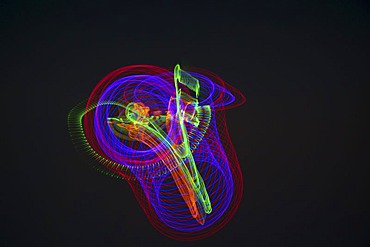Recent searches
Loading...
743-2037 - Common buzzard (Buteo buteo) landing on Pennine Way sign, Controlled, Cumbria, England, United Kingdom, Europe
1350-5324 - Young man mounting propeller blades on Phantom Drone
1350-5308 - Young man flying Phantom Drone outdoors at sunset
1350-5317 - Young man flying a quadcopter DJI phantom drone outdoors
1116-52169 - Men hunting from the Blue Duck Lodge, a working cattle farm with a focus on conservation, located in the Whanganui National Park. One man carrying goat kill on his back, (goats are a danger to the native wildlife and hunting is encouraged and educated here); Retaruke, Manawatu-Wanganui, New Zealand
1349-369 - Sugarcane Fields, Controlled Burn, Infrared Satellite Image
1174-9076 - Climate controlled wine cellar, with a domed brick ceiling and walls, stacked benches, Estonia
1116-48539 - Forest fire prescribed burn, Dairy, Oregon, United States of America
1116-48538 - Forest fire prescribed burn, Dairy, Oregon, United States of America
1116-47680 - Flames of a prescribed burn, Olene, Oregon, United States of America
1116-45104 - Controlled Burn In Wildlife Management Area
1116-45105 - Controlled Burn In Wildlife Management Area
860-287442 - Tara Pacific expedition - november 2017 Kimbe Bay, papua New Guinea, Zero wreck: Coral growth on this wreck is from a period of 74 years ! D: 15 m The ZERO, is a Japanese WW2 fighter plane wreck. This Zero wreck was discovered in January 2000 by local William Nuli while he was freediving for sea cucumbers. He asked the Walindi Plantation Resort dive team if they might know what it was, and when they investigated they uncovered the intact wreck of a Zero fighter, resting on a sedimented bottom in 15 m depth. This World War II Japanese fighter is almost completely intact. The plane is believed to have been ditched, the pilot is believed to have survived, but was never found on the island. He never returned home. Maybe he disappeared in the jungle? On 26th December 1943, during the battle of Cape Gloucester, the Japanese pilot made an emergency landing, ditching his Mitsubishi A6M Zero plane into the sea approximately 100m off West New Britain Province. The plane was piloted by PO1 Tomiharu Honda of the 204st K?k?tai. His fate is unknown but it is believed the he made a controlled water landing after running out of fuel and survived. Although he failed to return to his unit, the plane was found with the throttle and trim controls both set for landing and the canopy was open. There are no visible bullet holes or other shrapnel damage and the plane is still virtually intact after over 70 years underwater. It is a A6M2 Model 21 Zero, made famous for its use in Kamikaze attacks by the Japanese Imperial Navy. The wreck has the Manufacture Number 8224 and was built by Nakajima in late August 1942.
860-287440 - Tara Pacific expedition - november 2017 Zero wreck, vertical view Orthomosaic from 3D photogrammetry (13500 x 10000 px). D: 15 m Kimbe Bay, papua New Guinea, Coral growth on this wreck is from a period of 74 years ! The ZERO, is a Japanese WW2 fighter plane wreck. This Zero wreck was discovered in January 2000 by local William Nuli while he was freediving for sea cucumbers. He asked the Walindi Plantation Resort dive team if they might know what it was, and when they investigated they uncovered the intact wreck of a Zero fighter, resting on a sedimented bottom in 15 m depth. This World War II Japanese fighter is almost completely intact. The plane is believed to have been ditched, the pilot is believed to have survived, but was never found on the island. He never returned home. Maybe he disappeared in the jungle? On 26th December 1943, during the battle of Cape Gloucester, the Japanese pilot made an emergency landing, ditching his Mitsubishi A6M Zero plane into the sea approximately 100m off West New Britain Province. The plane was piloted by PO1 Tomiharu Honda of the 204st K?k?tai. His fate is unknown but it is believed the he made a controlled water landing after running out of fuel and survived. Although he failed to return to his unit, the plane was found with the throttle and trim controls both set for landing and the canopy was open. There are no visible bullet holes or other shrapnel damage and the plane is still virtually intact after over 70 years underwater. It is a A6M2 Model 21 Zero, made famous for its use in Kamikaze attacks by the Japanese Imperial Navy. The wreck has the Manufacture Number 8224 and was built by Nakajima in late August 1942.
1172-4486 - Watarase Controlled Burn, Tochigi, Japan
1174-5634 - Controlled Burn Masai Mara Game Reserve, Masai Mara, Kenya, Africa
1116-40652 - Controlled Burning Of Heather, Yorkshire, England
832-378856 - Young man controlling flying quadrocopter, remote controlled drone with camera, DJI Mavic
832-378855 - Young man controlling flying quadrocopter, remote controlled drone with camera, DJI Mavic
832-378857 - Flying quadrocopter, remote controlled drone with camera, DJI Mavic
1172-3268 - Watarase Controlled Burn, Tochigi, Japan
1174-2302 - A controlled forest burn, a deliberate fire set to create a healthier and more sustainable forest ecosystem. The prescribed burn of forest creates the right condition for regrowth, Whitman County, Washington, USA
1112-1821 - The once communist controlled Gdansk shipyards, home to the Solidarity movement, Gdansk, Poland, Europe
1112-1823 - The once communist controlled Gdansk shipyards, home to the Solidarity movement, Gdansk, Poland, Europe
1112-1820 - The once communist controlled Gdansk shipyards, home to the Solidarity movement, Gdansk, Poland, Europe
1112-1822 - The once communist controlled Gdansk shipyards, home to the Solidarity movement, Gdansk, Poland, Europe
832-332899 - Remote-controlled kite with dinghy, Punta Cana, Dominican Republic, Caribbean, Americas
832-277893 - Old lighthouse and senior citizens playing with remote-controlled model ships, Bremerhaven, Bremen, Germany
743-1088 - European mole (Talpa europea), controlled, United Kingdom, Europe
832-162542 - Computer-controlled milling machine cutting shapes from a plastic plate
832-64153 - Radar controlled speed monitoring with a speed camera, on the federal road B223, Konrad-Adenauer-Allee, in a 60 kilometers per hour speed-limit zone, Oberhausen, North Rhine-Westphalia, Germany, Europe
832-64147 - Radar controlled speed monitoring with a TraffiTower speed camera, on the federal road B224, Braukstrasse, in a 70 kilometers per hour speed-limit zone, Bottrop, North Rhine-Westphalia, Germany, Europe
832-64150 - Radar controlled speed monitoring with a speed camera, on the Autobahn A40 motorway, Ruhrschnellweg, in a 100 kilometers per hour speed-limit zone, Essen, North Rhine-Westphalia, Germany, Europe
832-64152 - Radar controlled speed monitoring with a speed camera, on the Autobahn A40 motorway, Ruhrschnellweg, in a 100 kilometers per hour speed-limit zone, Essen, North Rhine-Westphalia, Germany, Europe
1113-80911 - Controlled burning in park, bushfire, Kakadu National Park, Northern Territory, Australia
817-407821 - mujer esperando sobre pasaporte sellado, woman waiting on top of stamped passport,
857-55948 - Members of the Singapore Night Flyer Kite club light up the evening sky with remote controlled kites adorned with colorful LED lighting.
857-14972 - Controlled burn on Panther #10 clearcut on the Okanogan National Forest, WA to clear slash for replanting.
857-6001 - The jet tubes on Glen Canyon Dam the day they were opened for the controlled flood of 45,000 cfs on the Colorado River. Acting Facility Manager Dick White checks the jet tubes.
1188-107 - Cyprus. Abandoned houses along th Green Line in Nicosia dividing the Republic of Cyprus and Turkish controlled northern part. The United Nations Buffer Zone in Cyprus runs for more than 180.5?kilometres (112.2?mi) along what is known as the Green Line and has an area of 346?square kilometres (134?sq?mi). The zone partitions the island of Cyprus into a southern area effectively controlled by the government of the Republic of Cyprus (which is the de jure government for the entire island save for the British Sovereign Base Areas), and the northern area controlled by the Turkish army
1188-333 - Cyprus. Abandoned houses along th Green Line in Nicosia dividing the Republic of Cyprus and Turkish controlled northern part. The United Nations Buffer Zone in Cyprus runs for more than 180.5?kilometres (112.2?mi) along what is known as the Green Line and has an area of 346?square kilometres (134?sq?mi). The zone partitions the island of Cyprus into a southern area effectively controlled by the government of the Republic of Cyprus (which is the de jure government for the entire island save for the British Sovereign Base Areas), and the northern area controlled by the Turkish army
1188-226 - Monument to the Turkish victims of war in Famagusta,Turkish controlled northern part of Cyprus
1188-285 - Cyprus. Abandoned houses along th Green Line in Nicosia dividing the Republic of Cyprus and Turkish controlled northern part. The United Nations Buffer Zone in Cyprus runs for more than 180.5?kilometres (112.2?mi) along what is known as the Green Line and has an area of 346?square kilometres (134?sq?mi). The zone partitions the island of Cyprus into a southern area effectively controlled by the government of the Republic of Cyprus (which is the de jure government for the entire island save for the British Sovereign Base Areas), and the northern area controlled by the Turkish army
1188-314 - Cyprus. Abandoned houses along th Green Line in Nicosia dividing the Republic of Cyprus and Turkish controlled northern part.
1188-103 - Cyprus. Abandoned houses along the Green Line in Nicosia dividing the Republic of Cyprus and Turkish controlled northern part
1188-474 - Cyprus. Abandoned houses along th Green Line in Nicosia dividing the Republic of Cyprus and Turkish controlled northern part.
1188-67 - Cyprus. Flags of the Turkish controlled northern part of Cyprus along the Turkish national flag
1188-235 - Cyprus.Children play at school near Green Line in Nicosia dividing the Republic of Cyprus and Turkish controlled north
1188-53 - Cyprus.Children play at school near Green Line in Nicosia dividing the Republic of Cyprus and Turkish controlled north
1188-94 - Cyprus. Flags of the Turkish controlled northern part of Cyprus along the Turkish national flag
1196-98 - Xavante race. race is really a race at, it’s a ceremony, an aesthetic event. Xavante nonplused by notions of winning losing. logs carried by team, representing oppositions that xavante believe go to make up universe. running of logs expresses dynamic tension between opposing principles. purpose of ceremonies to stress that these antithesis need tear world apart. Opposing be controlled to complement each other create equilibrium harmony. Brazil
1188-452 - Monument to the Turkish victims of war in Famagusta,Turkish controlled northern part of Cyprus
1188-415 - Cyprus.Children play at school near Green Line in Nicosia dividing the Republic of Cyprus and Turkish controlled north
1188-427 - Cyprus.Children play at school near Green Line in Nicosia dividing the Republic of Cyprus and Turkish controlled north
1031-46 - Orkney Islands Sept 2011 Wave and Tidal Power shoot - The Pelamis Wave Power machine in Orkney - alongside in Lyness - the machine is the P2 . The Pelamis absorbs the energy of ocean waves and converts it into electricity. The machine floats semi-submerged on the surface of the water and is made up of a number of cylindrical sections joined together by hinged joints. As waves pass down the length of the machine these sections flex relative to one another. The motion at each hinged joint is resisted by hydraulic cylinders which pump fluid into high pressure accumulators allowing electrical generation to be smooth and continuous. Control of the resistance applied by the hydraulic cylinders allows generation to be maximised when waves are small, and the machine response to be minimised in storms. All generation systems are sealed and dry inside the machines and power is transmitted to shore using standard subsea cables and equipment.
1001-26 - European tree cricket (Oecanthus pellucens);North West Bulgaria;Europe;Slow shutter speed in combination with wirelessly controlled macro flash
1031-47 - Orkney Islands Sept 2011 Wave and Tidal Power shoot - The Pelamis Wave Power machine in Orkney - alongside in Lyness - the machine is the P2 . The Pelamis absorbs the energy of ocean waves and converts it into electricity. The machine floats semi-submerged on the surface of the water and is made up of a number of cylindrical sections joined together by hinged joints. As waves pass down the length of the machine these sections flex relative to one another. The motion at each hinged joint is resisted by hydraulic cylinders which pump fluid into high pressure accumulators allowing electrical generation to be smooth and continuous. Control of the resistance applied by the hydraulic cylinders allows generation to be maximised when waves are small, and the machine response to be minimised in storms. All generation systems are sealed and dry inside the machines and power is transmitted to shore using standard subsea cables and equipment.
1031-45 - Orkney Islands Sept 2011 Wave and Tidal Power shoot - The Pelamis Wave Power machine in Orkney - alongside in Lyness - the machine is the P2 . The Pelamis absorbs the energy of ocean waves and converts it into electricity. The machine floats semi-submerged on the surface of the water and is made up of a number of cylindrical sections joined together by hinged joints. As waves pass down the length of the machine these sections flex relative to one another. The motion at each hinged joint is resisted by hydraulic cylinders which pump fluid into high pressure accumulators allowing electrical generation to be smooth and continuous. Control of the resistance applied by the hydraulic cylinders allows generation to be maximised when waves are small, and the machine response to be minimised in storms. All generation systems are sealed and dry inside the machines and power is transmitted to shore using standard subsea cables and equipment.
1031-48 - Orkney Islands Sept 2011 Wave and Tidal Power shoot - The Pelamis Wave Power machine in Orkney - alongside in Lyness - the machine is the P2 . The Pelamis absorbs the energy of ocean waves and converts it into electricity. The machine floats semi-submerged on the surface of the water and is made up of a number of cylindrical sections joined together by hinged joints. As waves pass down the length of the machine these sections flex relative to one another. The motion at each hinged joint is resisted by hydraulic cylinders which pump fluid into high pressure accumulators allowing electrical generation to be smooth and continuous. Control of the resistance applied by the hydraulic cylinders allows generation to be maximised when waves are small, and the machine response to be minimised in storms. All generation systems are sealed and dry inside the machines and power is transmitted to shore using standard subsea cables and equipment.
987-493 - European scorpion (Buthus occitanus), Alicante, Spain
987-498 - Common earwig (Forficula auricularia), Angus, Scotland, UK
797-9556 - South Cross preserved in controlled atmospheric conditions, Clonmacnoise monastery, County Offaly, Ireland
817-337781 - Businessman holding globe, Businessman holding globe
836-41 - Golden headed lion tamarin (Leontopithecus chrysomelas) in the trees, controlled conditions, United Kingdom, Europe
836-39 - Tawny eagle (Aquila rapax) stare, controlled conditions, United Kingdom, Europe
836-48 - Black capped squirrel monkey (Saimiri boliviensis) alert on log, controlled conditions, United Kingdom, Europe
836-49 - Bald eagle (Haliaeetus leucocephalus) portrait, controlled conditions, United Kingdom, Europe-
836-42 - Red Titi monkey (Callicebus cupreus) on branch, controlled conditions, United Kingdom, Europe
836-2 - Pallas cat (Otocolobus manul) close-up, controlled conditions, Kent, England, United Kingdom, Europe
817-190442 - Disused old steam engine outside Indore railway station kept for disply Indore, Madhyapradesh, India
817-106627 - Golden Eagle Aquila chrysaetos in mountain habitat perched on stump taken in controlled conditions Scotland March 2007
817-2042 - Baby Mountain Lion (female, 3 months old) (controlled / captive animal) in winter snow, Felis concolor, Vermont, USA
You reached the end of search results



